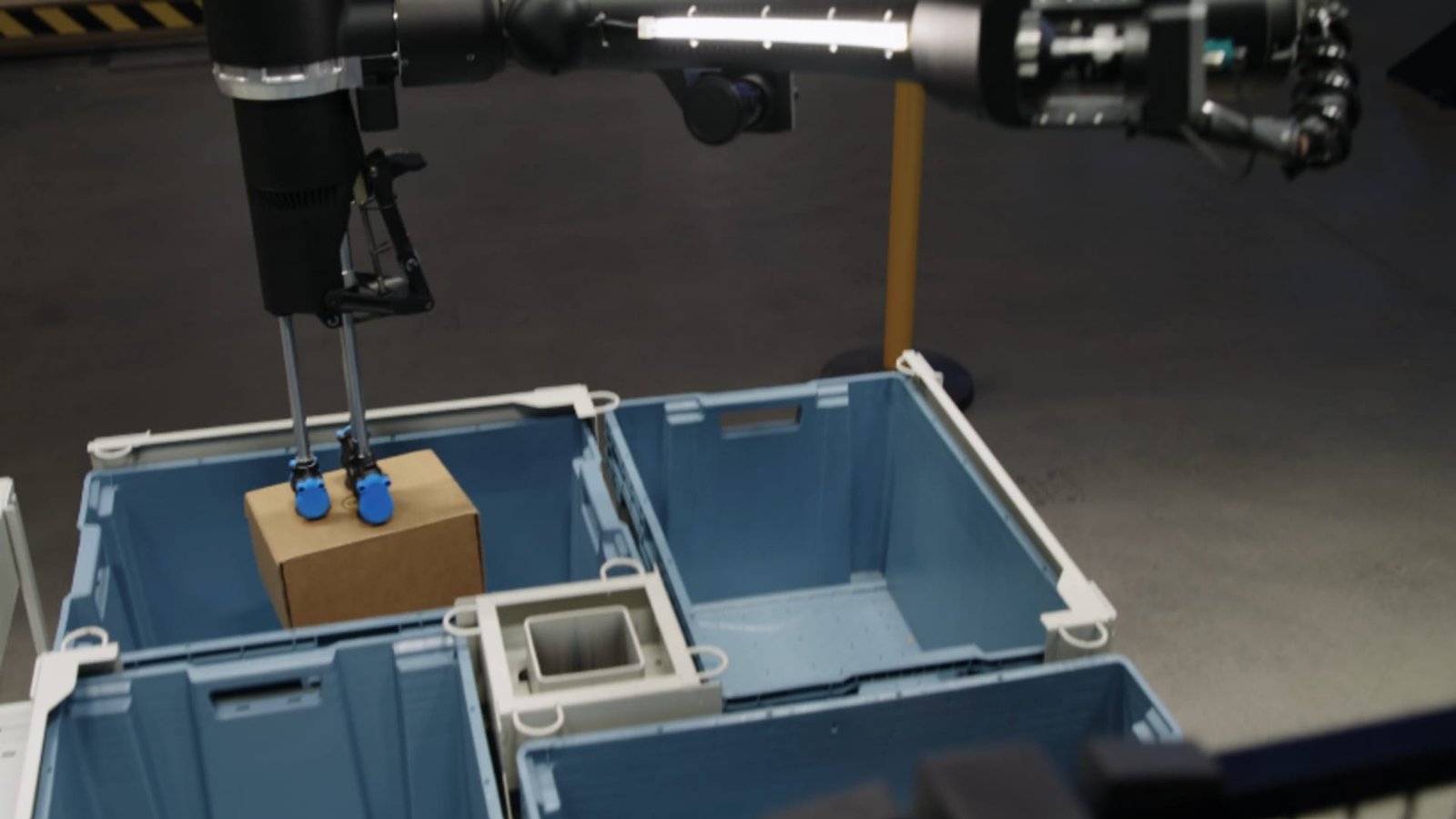
Amazon debuts the ‘Blue J’ robot that multitasks at once
Amazon On Wednesday, the company unveiled a new robotic system capable of performing multiple tasks simultaneously in its warehouses.
The system, called Blue Jay, consists of a series of robotic arms that are suspended from tracks like a conveyor belt. Those arms are tipped with suction-cup devices that allow them to grasp and sort objects of different shapes and sizes.
Blue Jay “has three separate robotic stations in a streamlined workplace that can pick, sort and assemble in one place,” Amazon sums up. Said in a blog.
The robotic system aims to “assist workers with otherwise difficult tasks while creating more efficiency in less physical space,” the company said.
Amazon is testing Blue Jay at a warehouse in South Carolina. So far, the company observes that the system can “pick, pack, stow and assemble approximately 75% of the items we store at our sites.”
Blue J joins a growing fleet of robotic machinery being deployed in Amazon’s army of warehouses. Over the years, Amazon has debuted robots capable of handling various tasks. Remove items from shelves to do Box sorting. It debuted in May “Vulcan,” A robotic system with a sense of touch.
Amazon’s warehouse automation efforts began in large part with the $775 million acquisition of Kiva Systems in 2012.
The announcement comes as Amazon’s warehouse automation comes under increasing scrutiny, particularly for how the technology is affecting its broader frontline workforce.
The New York Times Amazon’s automation team published a study Tuesday showing it expects to avoid hiring more than 160,000 people in the U.S. by 2027, saving about 30 cents on every item Amazon packs and delivers. The report was based on interviews and internal strategy documents, the Times said.
In response to the report, an Amazon spokesperson told CNBC that the documents provide “an incomplete and misleading picture of our plans.”
“In this instance, the content reflects only one team’s perspective and does not represent our overall hiring strategy — now or going forward — across our various operations business lines,” the spokesperson said in an email.
Amazon has said it could improve worker safety and reduce injuries by further automating its warehouses, but that prospect has been debated. A report by Disclosure from the Center for Investigative Reporting 2020 found that company warehouses with robots had higher injury rates than facilities without automation.
Amazon said last week It plans to hire 250,000 workers for full-time and part-time roles this holiday shopping season, up from the previous two years.
As the nation’s second-largest private employer, Amazon’s automation playbook could serve as a bellwether for the broader job market and other corporations. The company had more than 1.54 million employees globally End of second quarter. That figure excludes delivery drivers, who are contracted by third-party firms.
Morgan Stanley analysts speculated In Wednesday’s note Amazon’s rollout of automated warehouses, along with lower labor and fulfillment costs, could generate savings of up to $4 billion by 2027.
The company said Wednesday that the employees remain “at the center” of its robotics development. Amazon said its goal is to “reduce physically demanding tasks, simplify decisions and open up new career opportunities” for workers.
Amazon has sought to highlight how increased automation in its facilities will lead to employees taking on “more rewarding” roles at the company. It gives one Training program in Mechatronics and Robotics, which includes skills in maintaining and maintaining robotic machinery.
Smart glasses for drivers
Amazon also unveiled it on Wednesday A pair of augmented reality glasses For delivery drivers who they say can help with their day-to-day tasks.
The glasses are equipped with artificial intelligence, sensors and cameras that can scan packages. The glasses can also show drivers turn-by-turn directions, hazards and reminders that overlay information in their field of view. The device can also generate an audio alert to warn drivers if a dog is on the customer’s property.
The system comes with a small controller attached to the delivery driver’s vest that has a “dedicated emergency button” they can use to reach emergency services while on the road.
Amazon said it tested versions of the glasses with hundreds of drivers to inform the device’s design.
The company relies on thousands of contracted delivery firms to drop packages at shoppers’ doorsteps. Along with this, more and more technology has been incorporated into their workflow over the years video cameras, Smartphone apps They track and score their driving behavior and AI tools which can help drivers identify the correct package to be delivered at each stop.
See: Meet Vulcan, Amazon’s new stowing robot that can feel what it touches













Post Comment